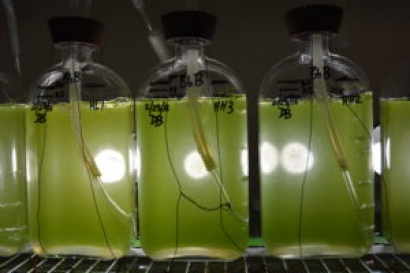
The use of the GALT technology will enable the testing of tens of thousands of unique microbiomes on algal physiology. The project also aims to reduce wasted byproducts of photosynthesis.
"We are very excited to bring the unique capabilities of GALT's technology to this partnership with the Department of Energy and Lawrence Livermore National Laboratory," said Peter Christey, CEO of GALT.
"The opportunity to screen tens of thousands of microbiome combinations to find the needle in a haystack using GALT's novel technology was too good to pass up," says principal investigator and LLNL staff scientist Xavier Mayali.
The team will specifically target bacteria that are able to increase biomass yield under high light and temperature stress conditions, which occur in desert environments such as Arizona, where plenty of sunlight and useable land exists and could one day support viable algal biofuel production facilities.
Funded by the DOE Bioenergy Technologies Office (BETO) within the Office of Energy Efficiency and Renewable Energy (EERE), this agency supports early-stage research and development of energy efficiency and renewable energy technologies.

